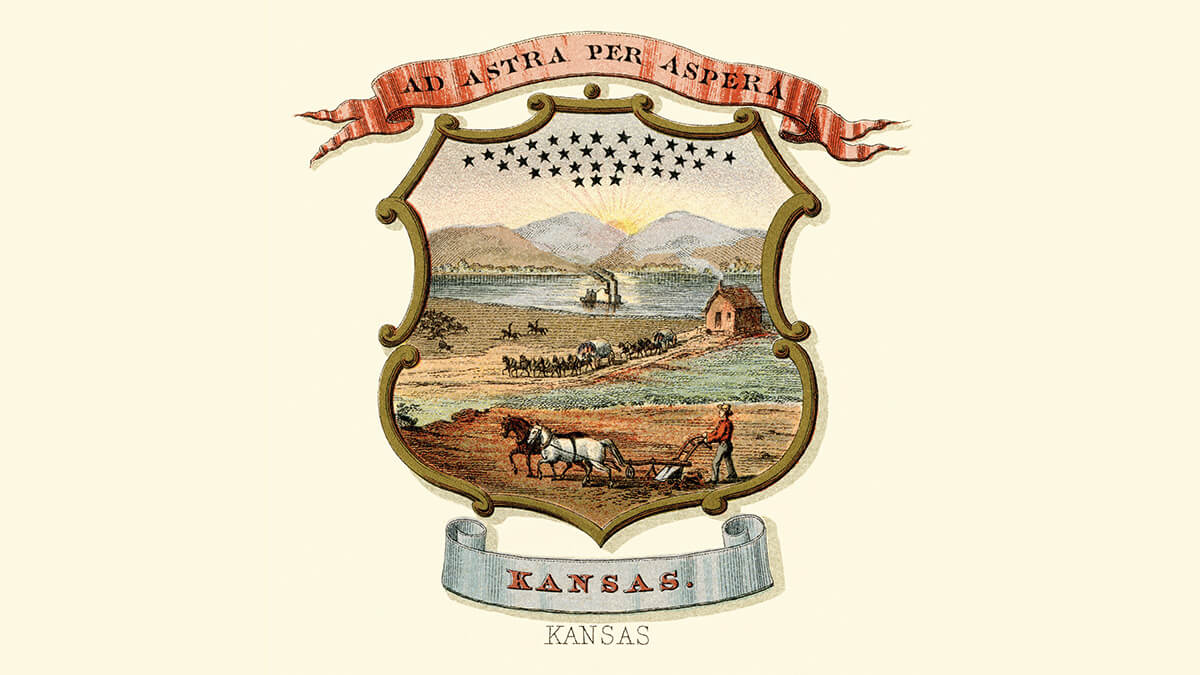Composition
The Kansas flag features a field of dark blue charged with the state seal, centered.
Above the seal is the state’s sunflower crest and below is the word “Kansas” in gold.

The Kansas flag was designed and sewn by Lincoln seamstress, Hazel Avery, for a 1925 Fourth of July parade.
It was adopted in 1927, replacing a previous state banner that had been rejected for display in Washington D.C. It was designed to hang from a horizontal bar and wouldn’t fly well next to other state flags.
Avery’s flag was later altered to add “Kansas” below the state seal.
This version was officially adopted September 24, 1961.
The Kansas flag features a field of dark blue charged with the state seal, centered.
Above the seal is the state’s sunflower crest and below is the word “Kansas” in gold.

Kansas as the 34th state to join the Union
westward expansion, To the Stars through Difficulties
state flower, regional flora
westward expansion
the Kansas plains, shared history with Native Americans
the east, tradition
the Kansas River, commerce
rich agricultural tradition
The Kansas seal and coat of arms are credited to state senator John James Ingalls. It is a complicated and detailed design that is often reproduced with poor quality.

The Kansas flag prominently features blue and gold, with supporting colors within the state seal.
The Kansas flag uses a proportion of 3:5.
Kansas statute specifies the proportion and spacing for the flag’s visual elements in feet and inches, which is rendered here.

Hazel Avery’s original flag design used from 1927 until 1961.
